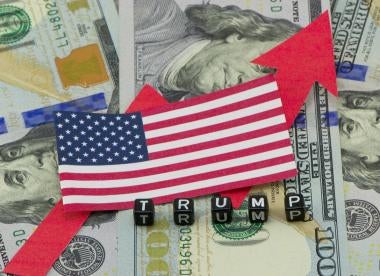The transition to a new administration with the election of Republican Donald J. Trump as President, along with continued Republican control of the Senate and House of Representatives, promises to bring change to each of the federal financial regulatory agencies. Changes in leadership at the federal financial regulatory agencies will likely result in changes in policy regarding regulation, compliance, enforcement, and transactions. While these transitions will take place over different time frames depending on the agency, there will likely be new leaders and many new board members at all of the agencies within a year of the new President’s inauguration.
For the Board of Governors of the Federal Reserve System (“Federal Reserve Board” or “Board), very significant transition changes could begin immediately, with others to come over time. The seven members of the Federal Reserve Board are nominated by the President and confirmed by the Senate. Currently, the Board only has five members, so the new administration can nominate two members to fill existing vacancies, although the Board has operated with five members for extended periods. There is no requirement to balance the Board between Republican and Democratic members.
A full term for a Board member is fourteen years. One term begins every two years, on February 1 of even-numbered years. A member who serves a full term may not be reappointed. A member who completes an unexpired portion of a term may be reappointed. All terms end on their statutory date regardless of the date on which the member is sworn into office.
The Chairman and the two Vice Chairmen of the Board (one for supervision) are named by the President from among the members and are confirmed by the Senate. They each serve a term of four years. A member’s term on the Board is not affected by his or her status as Chairman or Vice Chairman, although it is common practice for a Chair or Vice Chair to resign as a member when his or term as Chair or Vice-Chair comes to an end.
The President may not remove a member before the end of his or her term except “for cause.” Although the Federal Reserve Act does not define what would justify removal “for cause,” other statutes and Supreme Court precedent generally provide that removal for cause requires “inefficiency, neglect of duty, or malfeasance in office.” See Humphrey’s Executor, 295 U.S. 602, 620 (1935); Free Enterprise Fund v. Public Company Accounting Oversight Board, 561 U.S. 477, 502 (2010); 15 U.S.C. § 41 (Federal Trade Commission Act); 12 U.S.C. § 5491(c)(3) (Title X of the Dodd-Frank Act).
The Chair of the Federal Reserve Board, Janet L. Yellen, is serving a four-year term which ends February 3, 2018, and is simultaneously serving a 14-year term as a Federal Reserve Board member that will expire January 31, 2024. President-elect Trump has stated that he would most likely replace Dr. Yellen, though it is unclear whether he would do so when her term as Chair ends, or whether he would ask her to voluntarily resign before then. These statements have raised concerns about the new President exerting undue political pressure on the central bank. Historically, a Board Chair is nominated and confirmed to succeed the outgoing Chair before the expiration of the latter’s term, and there is no precedent for gaps in the top position at the Board.
Significantly, the President is likely to immediately nominate someone for one of the open seats at the Board and at the same time nominate that person to be the Vice Chair for Supervision (a position that is currently not filled). When that occurs, it is widely assumed that Governor Daniel K. Tarullo, who has effectively acted as the head of supervision at the Federal Reserve Board without being appointed Vice Chair, will resign, creating a third vacant board seat to fill. This anticipated change in leadership is likely to have a substantial and immediate impact on Federal Reserve supervisory and regulatory policy.
Vice Chairman Stanley Fischer is serving a four-year term that expires on June 12, 2018. Dr. Fischer’s term as a member of the Board expires January 31, 2020.
The three other Federal Reserve Board members each have terms that expire between January 31, 2022 and January 31, 2028. Given the unusual length of Board members’ terms, it is rare for Board members to serve a full 14-year term. More commonly, Board members resign after a period of service and new members are appointed to fill the remaining terms.
Absent the early resignation of Chair Yellen or Vice Chairman Fischer, we would expect to see only gradual changes in monetary policy at the Federal Reserve Board until the first half of 2018.




 i
i


